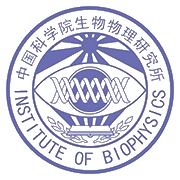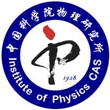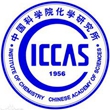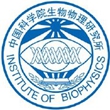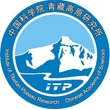Sessions 1:Mathematics and Physics
Paul T.P. Ho

Character introduction
Experience of education and training
Faculty at Harvard University
Senior Scientist at Smithsonian Astrophysical Observatory
Positions
Director, James Clerk Maxwell Telescope (2015-)
Director General, East Asian Observatory (2014-)
Distinguished Research Fellow, ASIAA (2002-)
Director, ASIAA (2005-2014, 2002-2003)
ERG-Taiwan Principal Investigator, ASIAA (2013-)
Greenland Telescope Principal Investigator, ASIAA (2011-)
ALMA-Taiwan Principal Investigator, ASIAA (2005-2015)
SUMIRE//PFS-Taiwan Principal Investigator, ASIAA (2011-2014)
Subaru HSC-Taiwan Principal Investigator, ASIAA (2008-2014)
SMA-Taiwan Principal Investigator, ASIAA (2005-2014)
AMiBA Principal Investigator, ASIAA (2002-2014)
SMA Project Scientist, Smithsonian Astrophysical Observatory (1989-2005)
Joint Professor of Physics, National Cheng Kung University (2018-)
Adjunct Professor of Physics, National Tsing Hua University (2006-)
Adjunct Professor of Astronomy, National Central University (2003-)
Distinguished Visiting Fellow, Korea Astronomy and Space Science Institute (2015-2018)
Joint Professor of Physics, National Taiwan University (2003-2015)
Senior Astrophysicist, Smithsonian Astrophysical Observatory (1989-2014)
Research and achievements
Interstellar Ammonia as one of the important probes of interstellar medium
Discovery of extended HI arms drawn out by the M81-M82 interacting galaxies Resolving infalling gas towards Galactic Center
Construction of the Submillimeter Array
Resolving magnetic field structures in star forming regions
Construction of the YT Lee Array for Microwave Background Anisotropy
Construction of Taiwan portions of ALMA
Construction of Taiwan portions of Hyper Suprime Camera and Prime Focus Spectrograph Construction of the Greenland Telescope and deployment to Thule
Formed the East Asian Observatory
Took over the Operation of the James Clerk Maxwell Telescope
Formed East Asian Partnership for Event Horizon Telescope
Participation in Event Horizon Telescope with SMA, JCMT, ALMA, GLT
Faculty at Harvard University
Senior Scientist at Smithsonian Astrophysical Observatory
Positions
Director, James Clerk Maxwell Telescope (2015-)
Director General, East Asian Observatory (2014-)
Distinguished Research Fellow, ASIAA (2002-)
Director, ASIAA (2005-2014, 2002-2003)
ERG-Taiwan Principal Investigator, ASIAA (2013-)
Greenland Telescope Principal Investigator, ASIAA (2011-)
ALMA-Taiwan Principal Investigator, ASIAA (2005-2015)
SUMIRE//PFS-Taiwan Principal Investigator, ASIAA (2011-2014)
Subaru HSC-Taiwan Principal Investigator, ASIAA (2008-2014)
SMA-Taiwan Principal Investigator, ASIAA (2005-2014)
AMiBA Principal Investigator, ASIAA (2002-2014)
SMA Project Scientist, Smithsonian Astrophysical Observatory (1989-2005)
Joint Professor of Physics, National Cheng Kung University (2018-)
Adjunct Professor of Physics, National Tsing Hua University (2006-)
Adjunct Professor of Astronomy, National Central University (2003-)
Distinguished Visiting Fellow, Korea Astronomy and Space Science Institute (2015-2018)
Joint Professor of Physics, National Taiwan University (2003-2015)
Senior Astrophysicist, Smithsonian Astrophysical Observatory (1989-2014)
Research and achievements
Interstellar Ammonia as one of the important probes of interstellar medium
Discovery of extended HI arms drawn out by the M81-M82 interacting galaxies Resolving infalling gas towards Galactic Center
Construction of the Submillimeter Array
Resolving magnetic field structures in star forming regions
Construction of the YT Lee Array for Microwave Background Anisotropy
Construction of Taiwan portions of ALMA
Construction of Taiwan portions of Hyper Suprime Camera and Prime Focus Spectrograph Construction of the Greenland Telescope and deployment to Thule
Formed the East Asian Observatory
Took over the Operation of the James Clerk Maxwell Telescope
Formed East Asian Partnership for Event Horizon Telescope
Participation in Event Horizon Telescope with SMA, JCMT, ALMA, GLT
Topic: First Image of a Black Hole
Abstract The Event Horizon Telescope, a network of 8 radio telescopes, operating at millimeter-wavelengths, and spanning the surface of the earth, has successfully produced the first picture of a black hole. We achieved the highest angular resolution in astronomy by using the Very Long Baseline Interferometry. This Supermassive Black Hole, in the nucleus of the M87 galaxy, is the first case where we can resolve the event horizon, where even light itself cannot escape from the gravity of the black hole. This first picture also demonstrates directly Einstein’s General Relativity on the distortion of space in the presence of strong gravity. In addition, we detect the glow of material swirling around the black hole in the form of an accretion disk, where material gather before falling inside the black hole.
KEY WORDS: Supermassive Black Hole, Event Horizon Telescope, East Asian Observatory
REFERENCES
1. First Μ87 Event Horizon Telescope Results. I. The Shadow of the Supermassive Black Hole, Event Horizon Telescope Collaboration, …… Ho, P.T.P., …..., Ap.J., 875L, 1E (2019).
KEY WORDS: Supermassive Black Hole, Event Horizon Telescope, East Asian Observatory
REFERENCES
1. First Μ87 Event Horizon Telescope Results. I. The Shadow of the Supermassive Black Hole, Event Horizon Telescope Collaboration, …… Ho, P.T.P., …..., Ap.J., 875L, 1E (2019).
Previous Alain Bécoulet
Next Zhanwen Han

